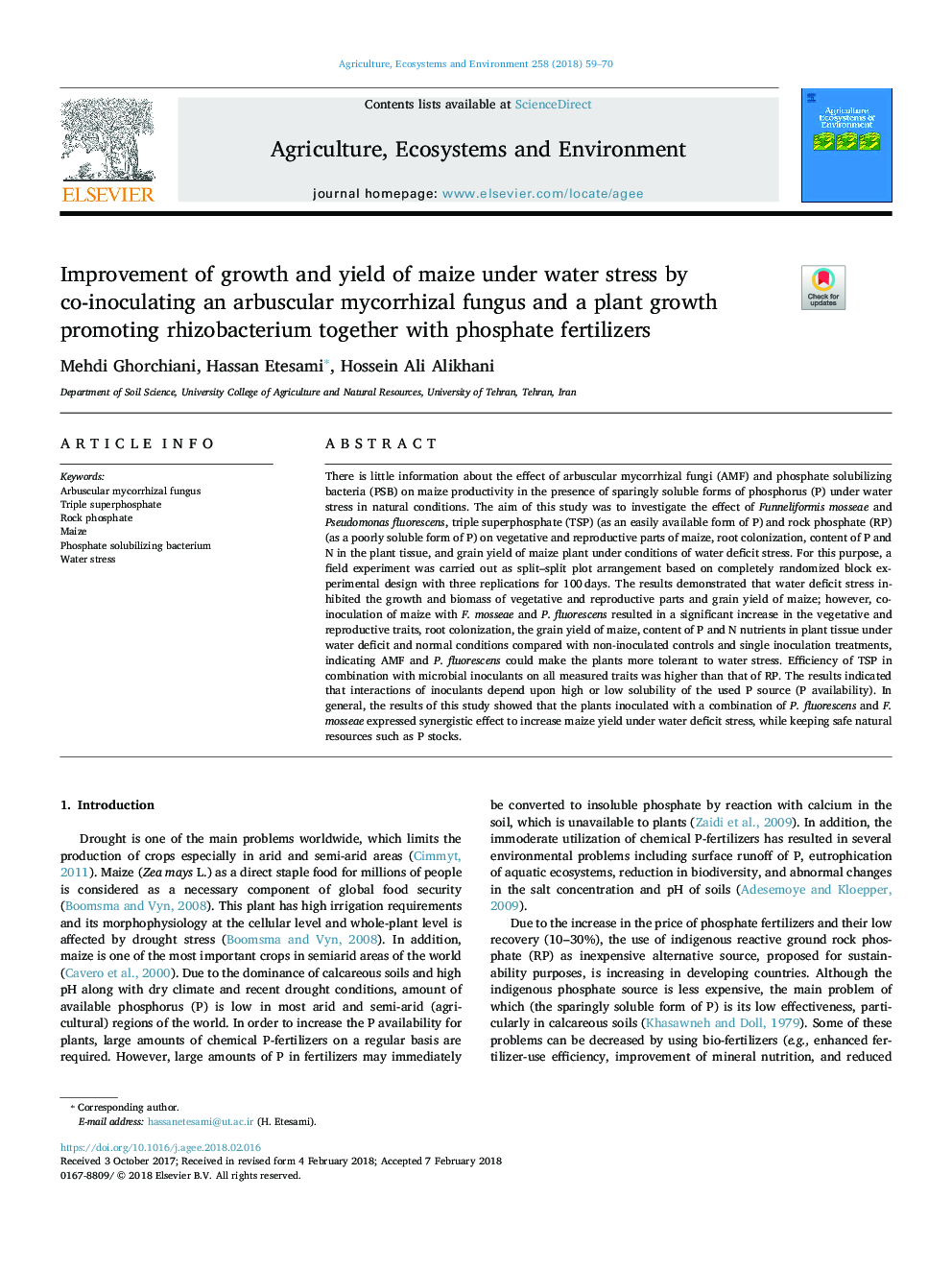| Article ID | Journal | Published Year | Pages | File Type |
|---|---|---|---|---|
| 8487116 | Agriculture, Ecosystems & Environment | 2018 | 12 Pages |
Abstract
There is little information about the effect of arbuscular mycorrhizal fungi (AMF) and phosphate solubilizing bacteria (PSB) on maize productivity in the presence of sparingly soluble forms of phosphorus (P) under water stress in natural conditions. The aim of this study was to investigate the effect of Funneliformis mosseae and Pseudomonas fluorescens, triple superphosphate (TSP) (as an easily available form of P) and rock phosphate (RP) (as a poorly soluble form of P) on vegetative and reproductive parts of maize, root colonization, content of P and N in the plant tissue, and grain yield of maize plant under conditions of water deficit stress. For this purpose, a field experiment was carried out as split-split plot arrangement based on completely randomized block experimental design with three replications for 100â¯days. The results demonstrated that water deficit stress inhibited the growth and biomass of vegetative and reproductive parts and grain yield of maize; however, co-inoculation of maize with F. mosseae and P. fluorescens resulted in a significant increase in the vegetative and reproductive traits, root colonization, the grain yield of maize, content of P and N nutrients in plant tissue under water deficit and normal conditions compared with non-inoculated controls and single inoculation treatments, indicating AMF and P. fluorescens could make the plants more tolerant to water stress. Efficiency of TSP in combination with microbial inoculants on all measured traits was higher than that of RP. The results indicated that interactions of inoculants depend upon high or low solubility of the used P source (P availability). In general, the results of this study showed that the plants inoculated with a combination of P. fluorescens and F. mosseae expressed synergistic effect to increase maize yield under water deficit stress, while keeping safe natural resources such as P stocks.
Related Topics
Life Sciences
Agricultural and Biological Sciences
Agronomy and Crop Science
Authors
Mehdi Ghorchiani, Hassan Etesami, Hossein Ali Alikhani,
